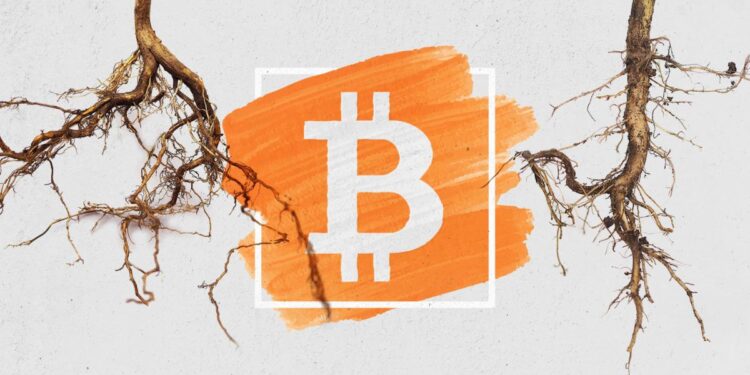Advertisement
What is BIP?
Bitcoin improvement proposal (BIP) is a technical documentation that proposes the changing problems in the way Bitcoin works.
If blockchain is considered software, BIP will be software updates. This proposal aims to improve Bitcoin and help the community communicate ideas, draft and propose technical changes and ultimately vote on accepting or opposing the proposal.
Everyone can view recommendations and discussions on GitHub, a popular open-source platform among software developers.

Who can submit BIP?
Theoretically, everyone can make an upgrade proposal and turn it into a BIP, because Bitcoin is a decentralized, open source network.
Therefore, you should throw an idea into forums, communities, and email lists to discuss whether the proposal will have the support of participants in the Bitcoin network.
How a BIP is approved
First, users will propose the idea and convert it into a detailed technical document according to BIP standards.
Users then forward the suggestions to the BIP editor who reviews and manages the proposal.
Besides that, the editor is responsible for editing the language and format according to the standard, testing the technical feasibility to make sure that the proposal is well prepared. The editor has the right to ask the author to edit or reject these suggestions. When the proposal is ready to proceed, it will receive an official number (e.g., BIP 119) and the champions will present the BIP to the community.
- Draft: BIP is submitted to the Bitcoin community’s mailing list and GitHub repository.
- Proposal: BIP includes a plan on how to implement changes in the blockchain.
- Enforcement: BIP is accepted and ready to deploy.
The implementation process consists of two steps. First, the upgrade must be merged into the blockchain software code (Bitcoin Core), which will then be activated. For example, the Taproot upgrade was merged in October 2020 and activated in November 2021. (Note: Not all BIPs that merge into codes are accepted and activated)
Proposals can take years until they are implemented, when the community discusses ideas, makes changes, and eventually reaches consensus. To minimize the prolonged status of discussions, a BIP should be focused on a single important change.

Because Bitcoin is decentralized, nodes must agree to the rules and reach a consensus on how to operate the network.
The nodes decide to activate the proposals by agreeing to run the version of the Bitcoin code.
A soft fork includes a change in the blockchain platform that is compatible with the previous version, making it possible for nodes to run “old versions of the software” without interruption. A BIP attached to a soft fork must achieve “majority” which means more than 90% of nodes must approve to upgrade. They are called “consensus BIPs.”
Hard fork — a radical upgrade that creates a new blockchain, replacing the old one — can be difficult to get approval from the community as they will require adoption from all Bitcoin participants, including nodes, exchanges, wallet providers, etc…
Not all BIPs suggest a direct change in the code. The standard BIP sets a new standard for services that use Bitcoin software like exchanges. They may require general approval to maintain interoperability among blockchain users.
Some proposals are called Process BIPs to introduce new processes and decision-making within the network with proposals on rules and how to make rules.

Recommendation: What Is Binance? Binance Registration Guide
Notable BIPs
BIP 001 and BIP 002
BIP 001 is the first proposal put forward by British-Indian programmer Amir Taaki in September 2011, describing what a proposal to improve Bitcoin is. Later, BIP-002 revised the guidelines and replaced BIP-001.
BIP 008 and BIP 009
BIP 008 and BIP 009 introduce a standard framework on how to enable soft fork upgrades for Bitcoin.
BIP 141
BIP 141 establishes a standardized format for SegWit addresses in the extended SegWit upgrade that includes various BIPs and modifies the way Bitcoin stores data.
Taproot
Taproot, the largest recent upgrade in Bitcoin, is a combined process of three BIPs (BIP 340, BIP 341, and BIP 342). It stems from a proposal by software developer Greg Maxwell in January 2018. Later, three BIPs were codified by Bitcoin developers Pieter Wuille, Tim Ruffing, A.J. Townes, and Jonas Nick.
The long-awaited upgrade launched in November 2021 — nearly four years after the initial proposal — and gave Bitcoin developers an expanded toolbox to build on the blockchain platform.
Related: What is AMM?
Conclusion
BIP offers proposed solutions that upgrade Bitcoin, and improve the scalability and security of the blockchain.
Hopefully, through the above article, Ecoinomic.io has helped you understand what BIP is, how it works as well as some outstanding Bitcoin improvement proposals. If you have any questions, don’t forget to leave a comment below, Ecoinomic.io are always ready to answer your questions!
















